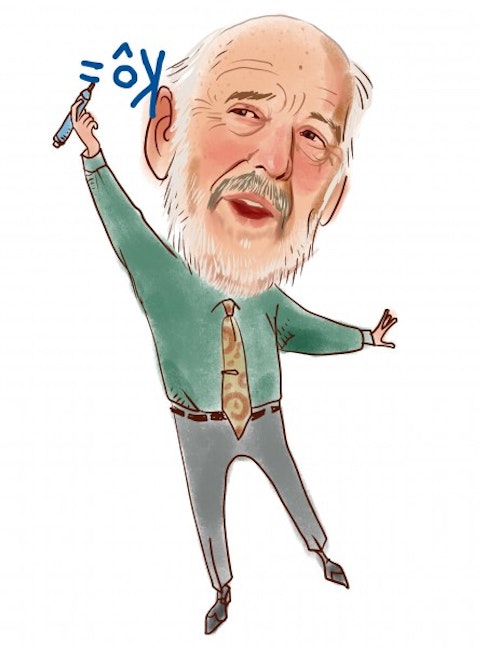When it comes to hedge funds, Jim Simons’ Renaissance Technologies is definitely one to watch. The fund, which Simons founded in 1982, uses quantitative analysis to exploit inefficiencies in the market – a technique it has done well with. Renaissance Technologies enjoyed returns of 34.1% last year. In comparison, the average hedge fund lost roughly 4 percent. RenTech’s strategy depends on quantity – on the number of positions held, the size of the transactions and the frequency of its trades.

This means that Renaissance Technologies typically has thousands of positions in its portfolio. That breadth of scope can mean that “monkeying” the Renaissance Technologies portfolio is difficult and costly for do-it-yourself investors, plus the fact that in order to exploit market inefficiencies, trades can be very short-term even taking place within minutes.
That said there are a few stocks that Simons has been holding for a while. We think that it is these positions that present the greatest opportunity for do-it-yourself investors. Each of the companies on our list has been in the Renaissance Technologies portfolio for at least five years (Q2 2007 through Q4 2011) and have never been sold out of during that time. In each case, the volume of shares held by the firm has increased steadily since 2007 and, coincidentally, constitute the largest holdings in the Renaissance Technologies portfolio at the end of the fourth quarter.
Apple (AAPL) was Renaissance Technologies’ largest position at the end of the fourth quarter. At the end of the second quarter 2007, Simons had 867,792 shares of the company in a new position. The average share price that quarter was $108.31. Since then, Simons has upped his stake in Apple in 9 separate quarters and reduced his stake in nine quarters. He had 1.28 million shares in the company at the end of December. During the fourth quarter 2011, the average share price for Apple was $391.76. Apple was recently trading at $514.85 a share. It has a mean one-year target estimate of $571.17 and is priced low at 10.84 times its forward earnings. Analysts estimate Apple’s earnings will grow by 19.30% per annum on average over the next five years, surpassing its industry expectations of 13.25%. With numbers like that – low pricing, high growth and strong expectations – we can see why Simons is hanging on to his stake in Apple.
Eli Lilly & Co. (LLY) has also had a place in the Renaissance Technologies portfolio for the last five years. The fund held 2.11 million shares in Eli Lilly at the end of the second quarter 2007 after buying 2.09 million shares in the company that quarter. The average share price was $58.04. After selling the company in a total of just 5 quarters in the last five years and adding to it in every other quarter, Simons ended the fourth quarter 2011 with 7.3 million shares of Eli Lilly in the Renaissance Technologies portfolio. The stock was recently trading at $38.75 a share. It has a mean one-year target estimate of $38.00 and pays a high $1.96 dividend (5.00% yield). Eli Lilly is also priced low, with a forward P/E of just 10.65. The outlook for the company isn’t great though. Analysts expect its earnings will decrease by an average of 9.31% a year for the next five years, while predicting earnings growth of 9.79% for its industry. We don’t like Eli Lilly as a long-term play. It is definitely a contrarian play. We’d rather invest in a stock with lower forward PE ratio and higher expected EPS growth rates. Teva Pharmaceuticals (TEVA) has a forward PE ratio of 8 and is expected to grow its EPS by 17% annually over the next 5 years.
Jim Simons has held a candle for Chipotle Mexican Grill (CMG) for the last five years as well. His Renaissance Technologies owned 51,400 shares of the company in a new position at the end of the second quarter 2007. The average share price that quarter was $76.86. Since then, Simons increased his position in Chipotle during 9 quarters and decreased his position in 9 quarters. When the fourth quarter 2011 closed, Simons owned 852,300 shares in the company and the average price of the stock was $323.46 a share. When the markets closed on February 21, Chipotle was trading at $383.58 a share on a mean one-year target estimate of $383. The stock is priced high at 35.27 times its forward earnings. Analysts predict Chipotle’s earnings will increase by 21.37% per annum on average over the next five years, beating industry predictions of 15.01%, and Deutsche Bank recently upgraded its opinion of the company from hold to buy, but we aren’t convinced. Chipotle looks like a hold, at best. It is just priced too high.





